Abstract
An intravenous injection of morphine reduced the binding of 14C-morphine by sera from rabbits immunized with morphine-6-hemisuccinated bovine serum albumin. Treatment of the sera with dialysis against glycine buffer (pH 3) followed by dialysis against phosphate buffered saline (PBS), conditions known to dissociate antigen–antibody complexes, restored approximately 76% of the original binding capacity. The heterogeneity of the antibody affinities was shown in both early `nonavid' and hyperimmune `avid' antisera by the demonstration of at least two distinct populations of antibodies. One population of antibodies formed loosely bonded antigen–antibody complexes and these complexes completely dissociated within 30 min. The second population had different dissociation times in the `nonavid' and `avid' antisera (15 and >72 hr respectively). The presence of the low affinity antibody resulted in different degrees of reduction of detectable binding by the standard washing procedures usually employed in the radioimmunoassay used in these studies. Washing caused less reduction in the amount of antigen bound by the more `avid' antisera.
Seventy-three per cent of sixty-three serum samples from heroin addicts studied, contained opioid capable of inhibiting the binding of morphine in the radioimmunoassay employed. Methadone at concentrations likely to be present in sera did not interfere with the binding of 14C-morphine. Sera from thirty-one of the patients were treated by dialysis against glycine buffer and PBS and then studied for the capacity to bind morphine. Only one of these thirty-one sera and none of the thirty-two sera that were not pretreated bound 14C-morphine suggesting that an immune response to heroin is not a significant contributing factor to opioid tolerance or the development of complications, such as pulmonary oedema, following opioid administration.
Full text
PDF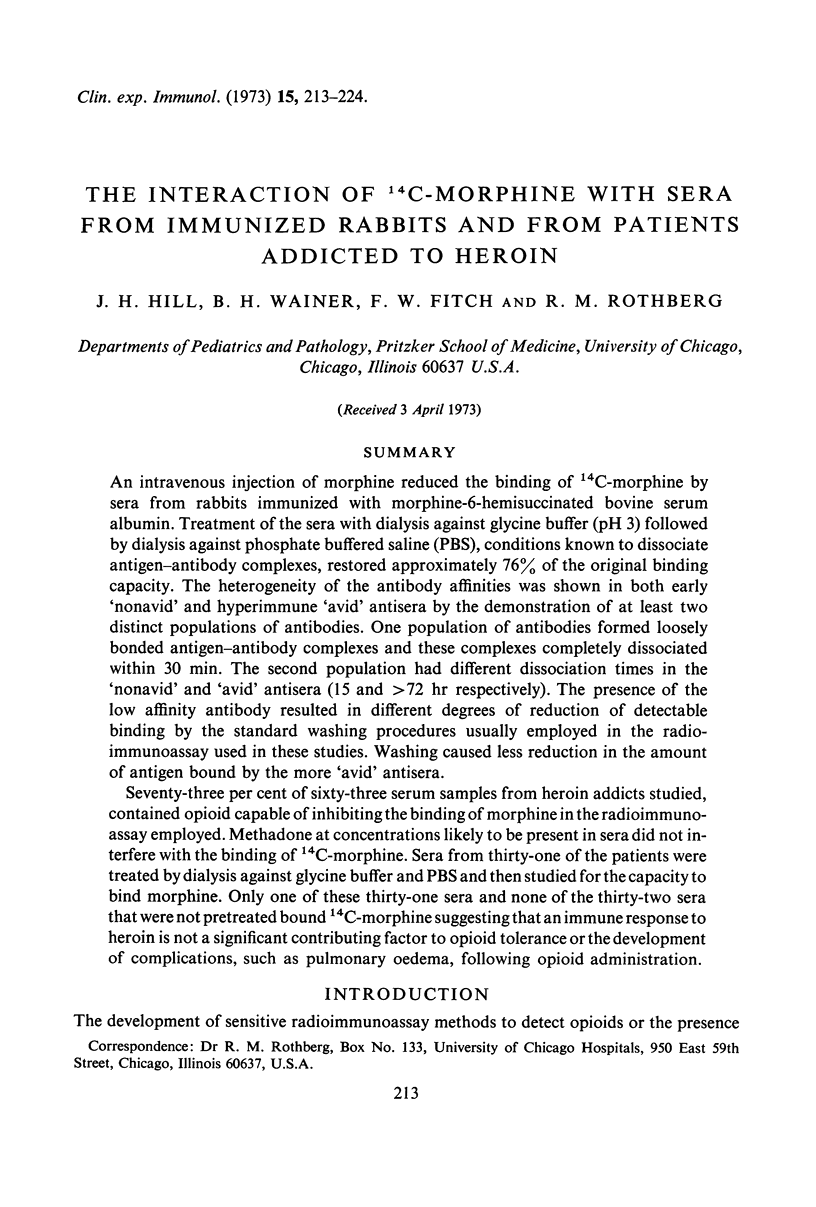
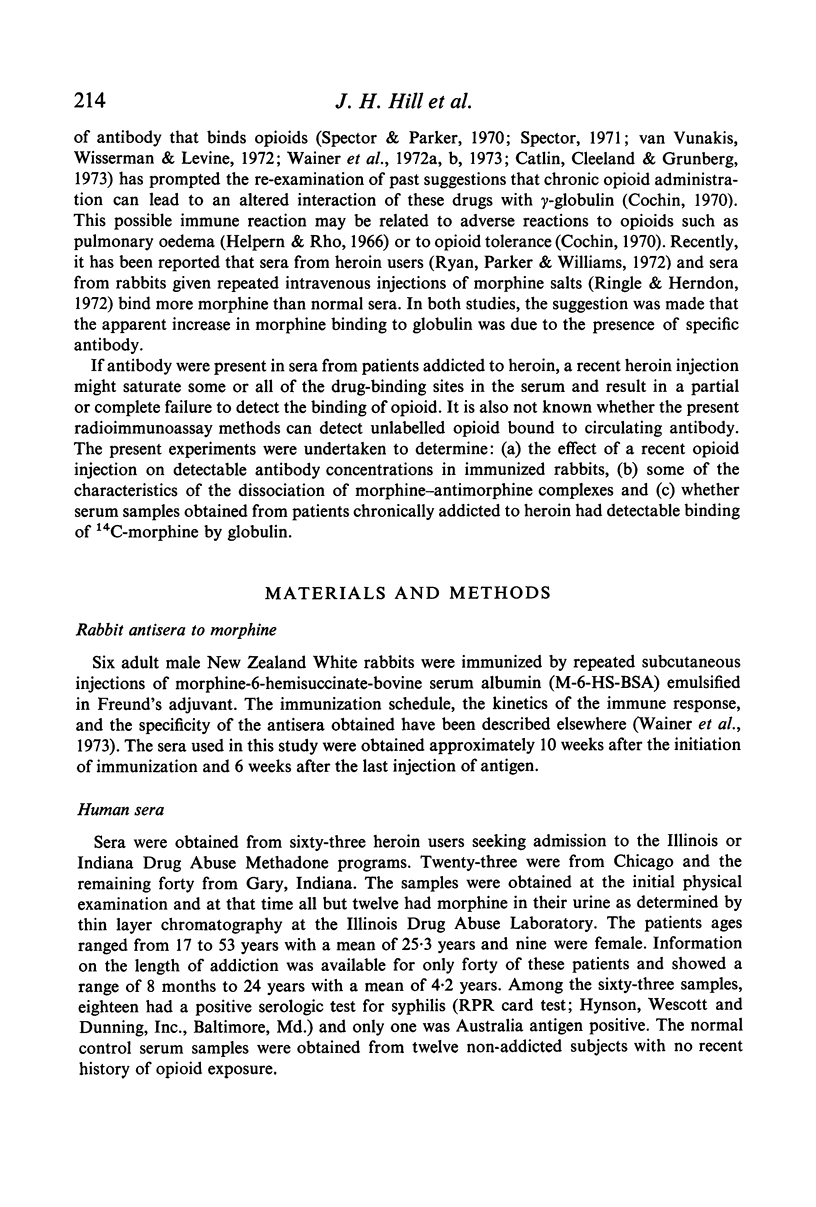


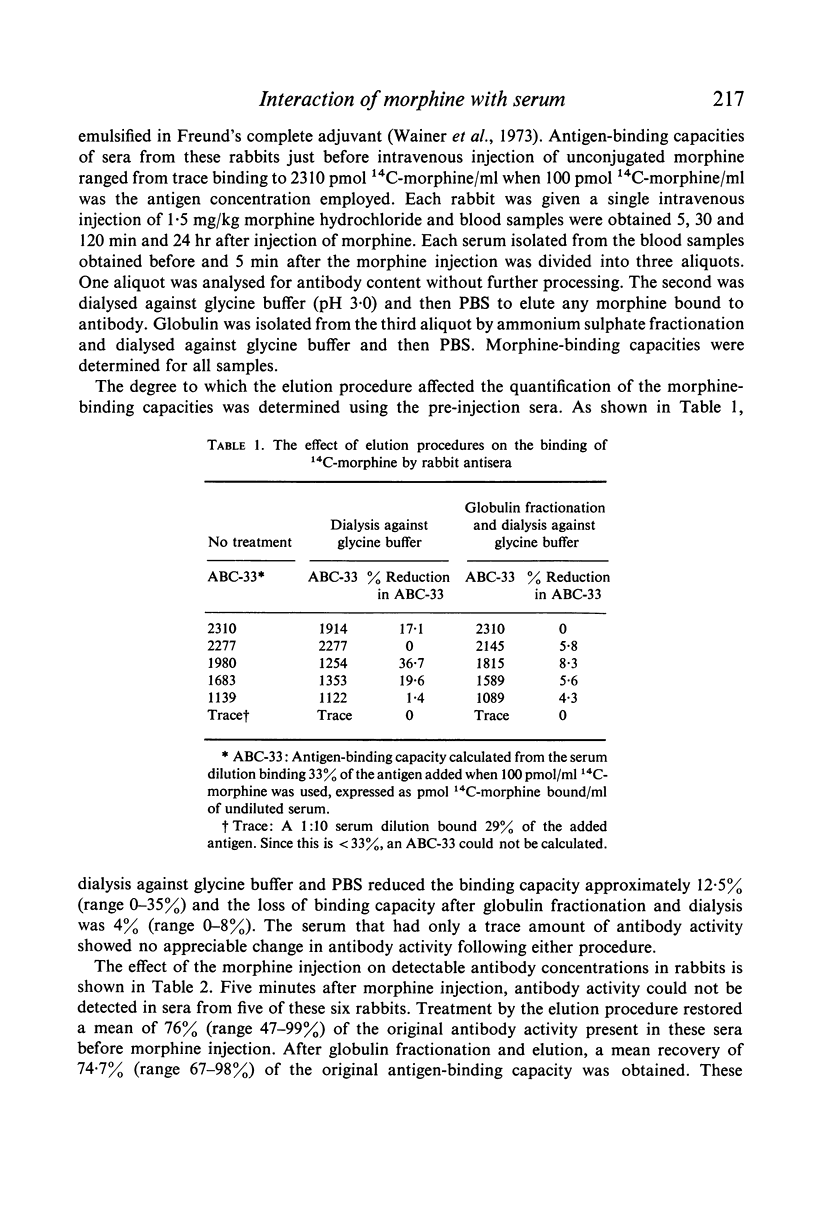
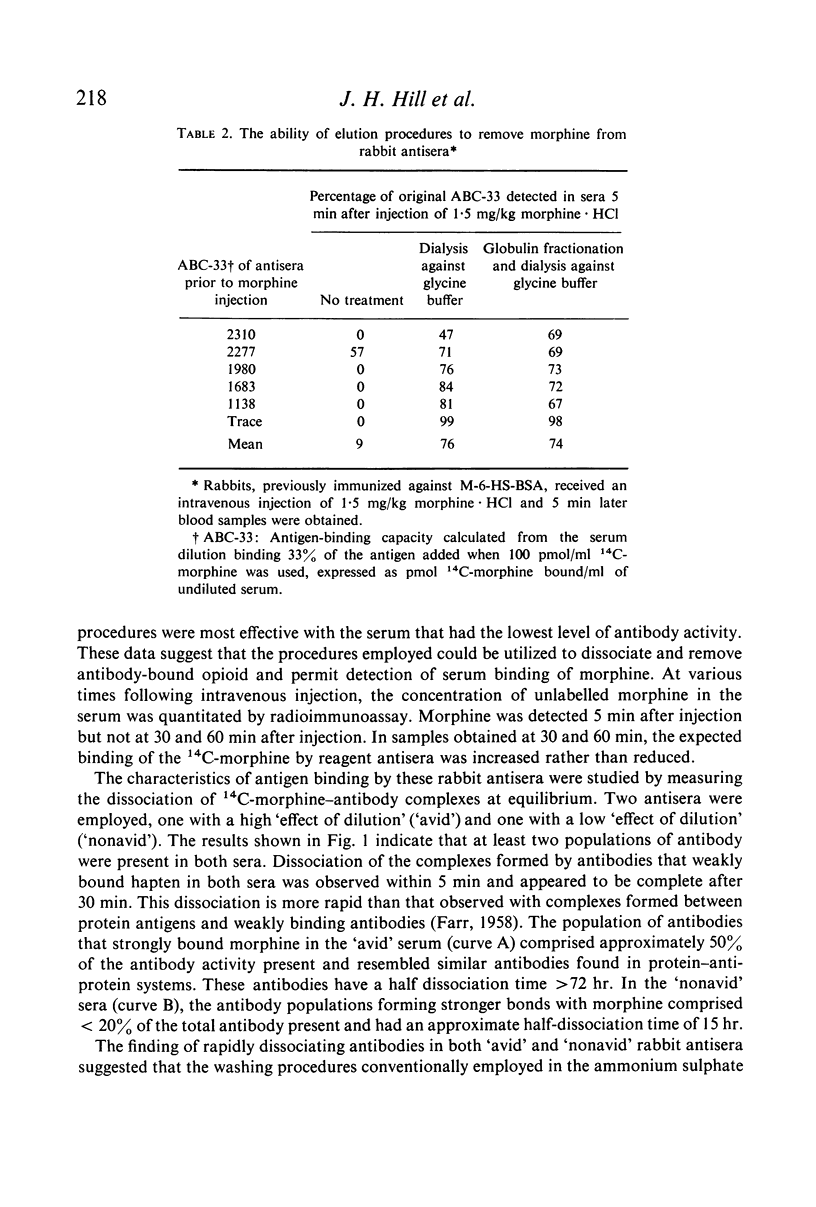

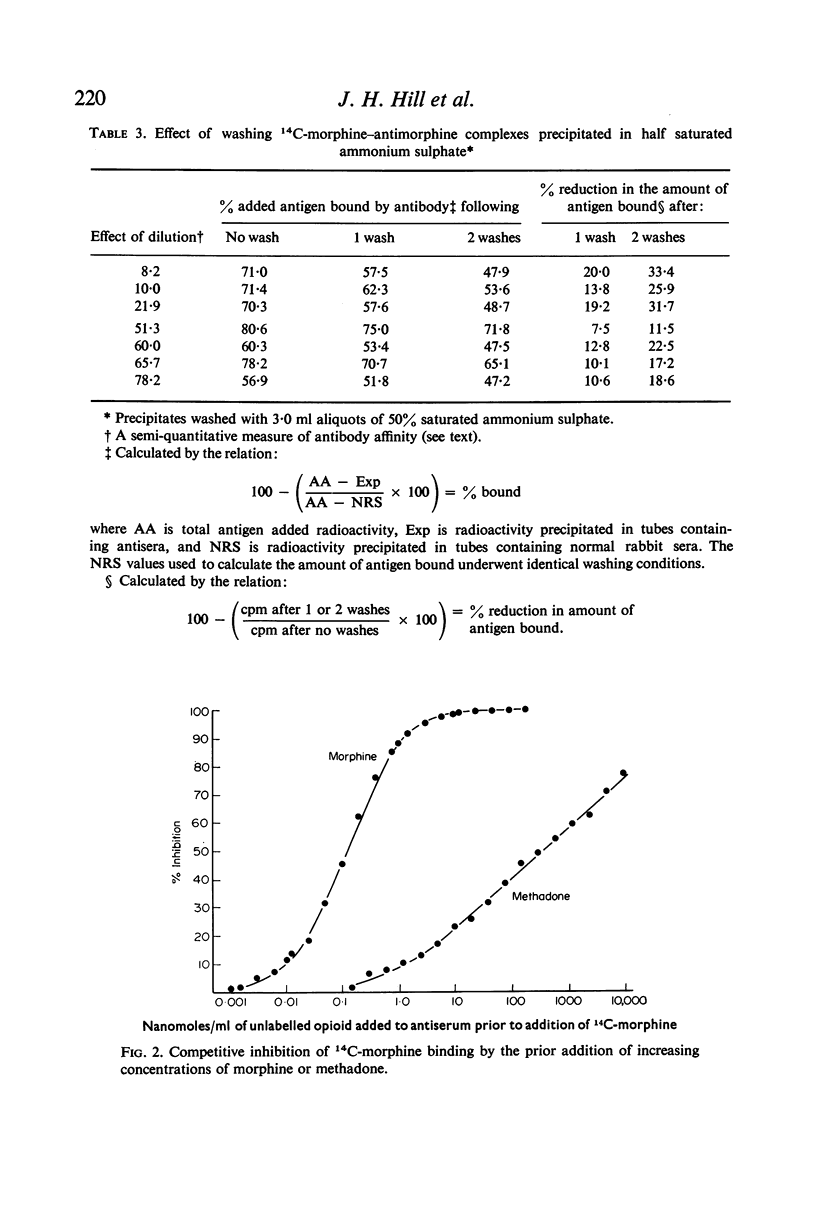
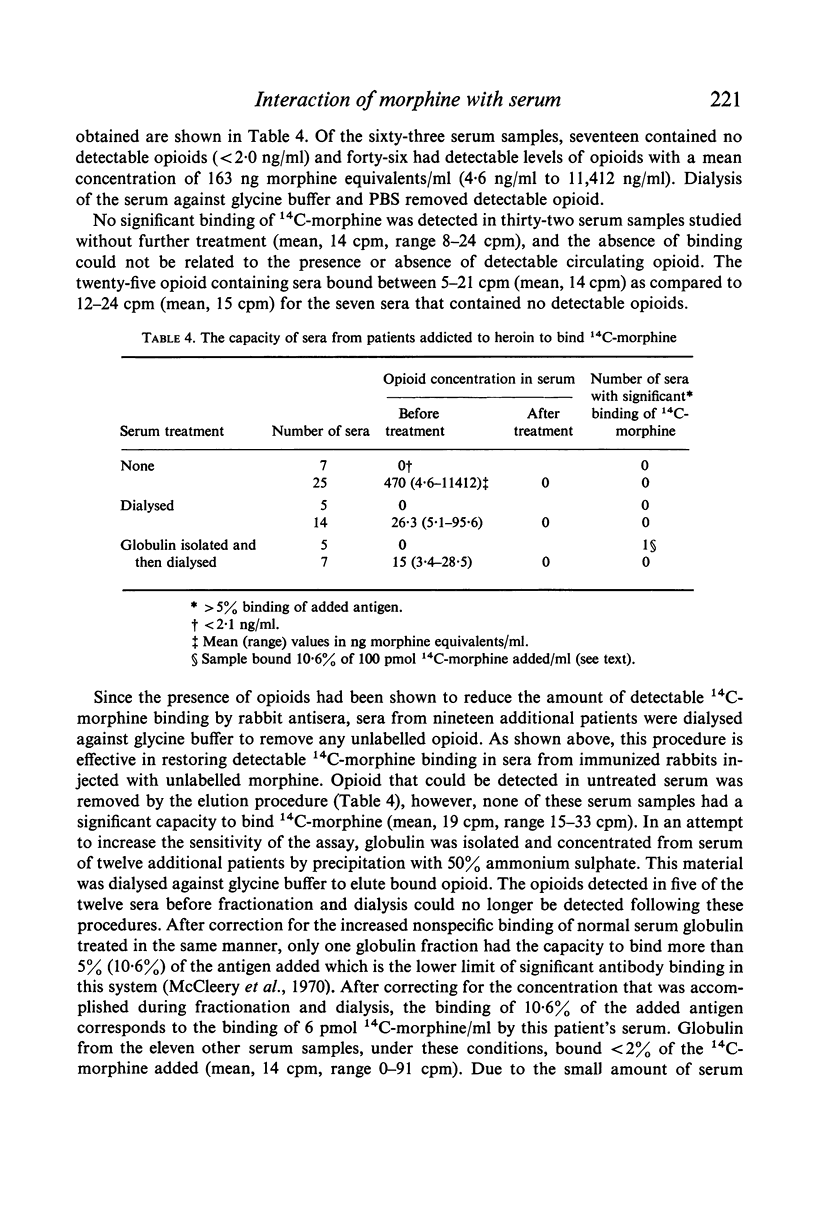
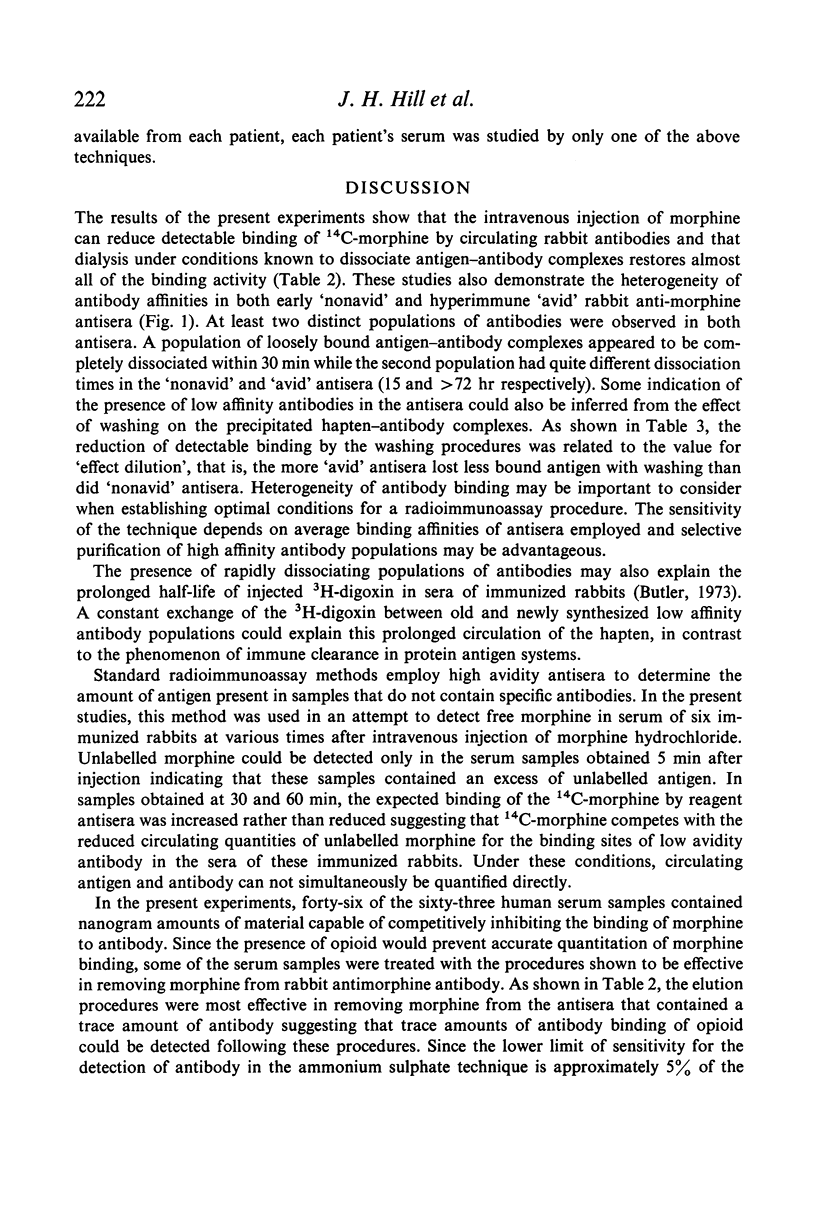
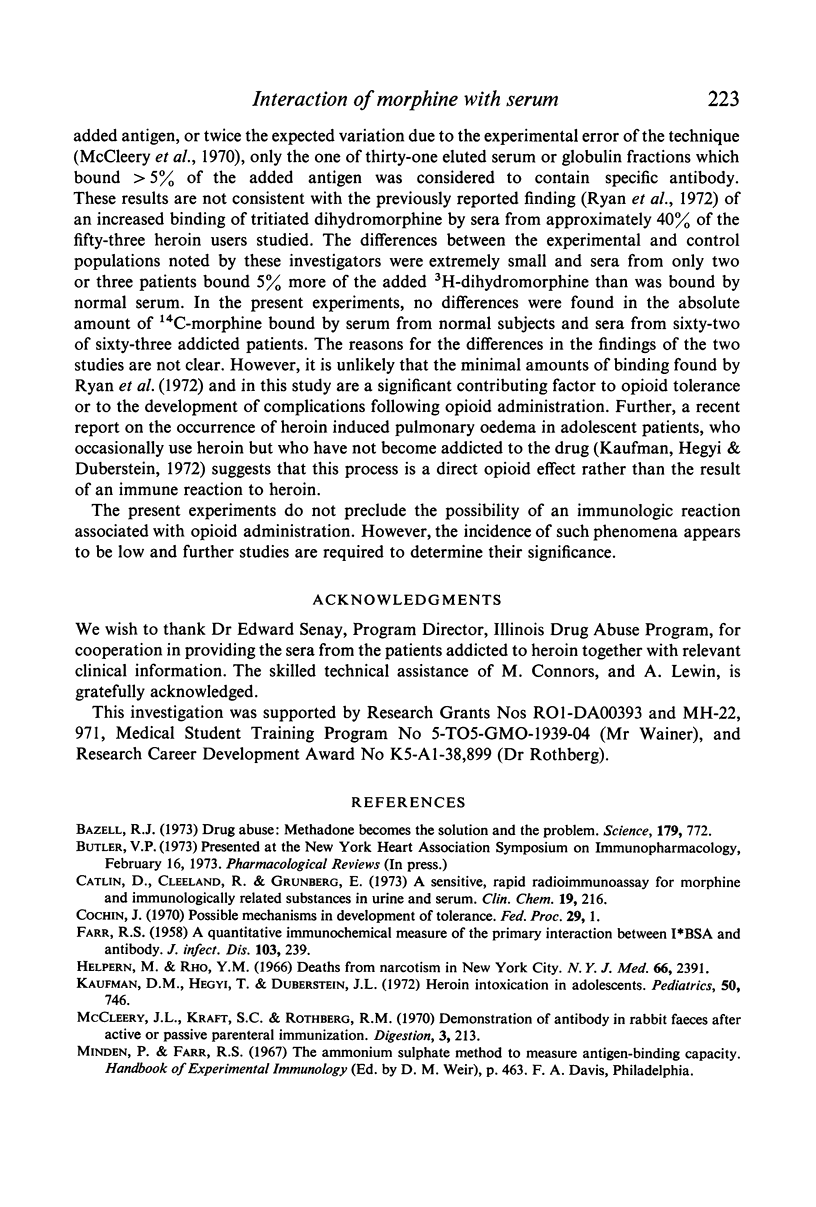

Selected References
These references are in PubMed. This may not be the complete list of references from this article.
- Bazell R. J. Drug abuse: methadone becomes the solution and the problem. Science. 1973 Feb 23;179(4075):772–775. doi: 10.1126/science.179.4075.772. [DOI] [PubMed] [Google Scholar]
- Catlin D., Cleeland R., Grunberg E. A sensitive, rapid radioimmunoassay for morphine and immunologically related substances in urine and serum. Clin Chem. 1973 Feb;19(2):216–220. [PubMed] [Google Scholar]
- FARR R. S. A quantitative immunochemical measure of the primary interaction between I BSA and antibody. J Infect Dis. 1958 Nov-Dec;103(3):239–262. doi: 10.1093/infdis/103.3.239. [DOI] [PubMed] [Google Scholar]
- Helpern M., Rho Y. M. Deaths from narcotism in New York City. Incidence, circumstances, and postmortem findings. N Y State J Med. 1966 Sep 15;66(18):2391–2408. [PubMed] [Google Scholar]
- Kaufman D. M., Hegyi T., Duberstein J. L. Heroin intoxication in adolescents. Pediatrics. 1972 Nov;50(5):746–753. [PubMed] [Google Scholar]
- McCleery J. L., Kraft S. C., Rothberg R. M. Demonstration of antibody in rabbit feces after active or passive parenteral immunization. Digestion. 1970;3(4):213–221. doi: 10.1159/000197034. [DOI] [PubMed] [Google Scholar]
- Ringle D. A., Herndon B. L. In vitro morphine binding by sera from morphine-treated rabbits. J Immunol. 1972 Jul;109(1):174–175. [PubMed] [Google Scholar]
- Rothberg R. M., Farr R. S. Antibodies in rabbits fed milk and their similarities to antibodies in some human sera. J Allergy. 1965 Sep-Oct;36(5):450–462. doi: 10.1016/0021-8707(65)90139-5. [DOI] [PubMed] [Google Scholar]
- Ryan J. J., Parker C. W., Williams R. C., Jr -Globulin binding of morphine in heroin addicts. J Lab Clin Med. 1972 Aug;80(2):155–164. [PubMed] [Google Scholar]
- Spector S., Parker C. W. Morphine: radioimmunoassay. Science. 1970 Jun 12;168(3937):1347–1348. doi: 10.1126/science.168.3937.1347. [DOI] [PubMed] [Google Scholar]
- Spector S. Quantitative determination of morphine in serum by radioimmunoassay. J Pharmacol Exp Ther. 1971 Aug;178(2):253–258. [PubMed] [Google Scholar]
- Van Vunakis H., Wasserman E., Levine L. Specificities of antibodies to morphine. J Pharmacol Exp Ther. 1972 Feb;180(2):514–521. [PubMed] [Google Scholar]
- Wainer B. H., Fitch F. W., Fried J., Rothberg R. M. A measurement of the specificities of antibodies to morphine-6-succinyl-BSA by competitive inhibition of 14 C-morphine binding. J Immunol. 1973 Mar;110(3):667–673. [PubMed] [Google Scholar]
- Wainer B. H., Fitch F. W., Rothberg R. M., Fried J. Morphine-3-succinyl--bovine serum albumin: an immunogenic hapten-protein conjugate. Science. 1972 Jun 9;176(4039):1143–1145. doi: 10.1126/science.176.4039.1143. [DOI] [PubMed] [Google Scholar]
- Wainer B. H., Fitch F. W., Rothberg R. M., Fried J. The structure of morphine monohemisuccinate. Science. 1972 Nov 10;178(4061):647–648. doi: 10.1126/science.178.4061.647. [DOI] [PubMed] [Google Scholar]


